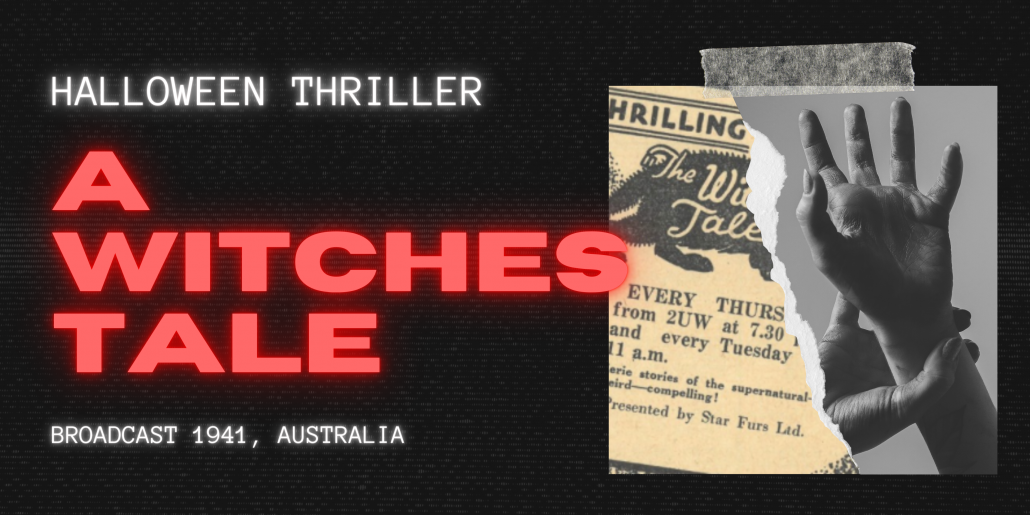 Picture this, a family huddled around the radio on Halloween, the sun is going down and a spooky story unfolds, everybody listens intently, imagination is working overtime, a bell chimes, there is a scream….
Picture this, a family huddled around the radio on Halloween, the sun is going down and a spooky story unfolds, everybody listens intently, imagination is working overtime, a bell chimes, there is a scream….
Before television, radio was the entertainment of choice in homes across Australia. During the 20th century, radio broadcasts varied greatly, with something for everyone including music shows, talks on politics, gardening and various topics, sporting event coverage, news, and of course serial dramas!
One of the most popular genres broadcast was serial thrillers! Not too dissimilar to many of the thriller podcasts that are popular today. Instead of reading a book one could go about what they were doing while being entertained by this gripping episode broadcast across the airwaves.
Having gained huge popularity in the USA, many thriller scripts were sent over to Australia and adapted locally, featuring well known Australian actors of the time like Ruth Cracknell
On “All Hallows Eve” 1941 A witch’s Tale was broadcast to Australian audiences.
A witches Tale was written especially as a Halloween broadcast and adapted for Australian radio.
The original American series of The Witch’s Tale was significant as the earliest horror program produced for radio. It was first heard in May 1931 out of radio station WOR in New York City.
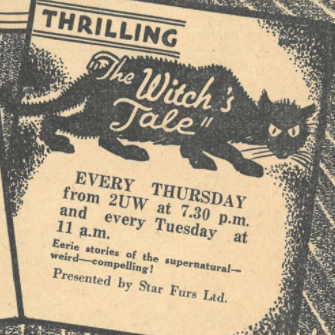
The opening sets the tone of the episode, with the chiming of a bell, an eerie voice informing you that you will hear tales from Nancy the witch of Salem and her cat Satan accompanied by sinister music and sound effects.
The Brisbane Telegraph described the program in 1947 as ‘not the sort of radio program the timid would enjoy listening to when alone in the house after nightfall.
In fact, Newspapers began to receive letters from outraged listeners protesting the broadcasts of such horror and the damaging effect it had on young people.
‘Do parents realise the serious damage that may be done to the minds of their children by the horror story of the radio? One serial broadcast from a local station between 6 and 7pm for children could cause untold mischief to many an innocent child … This mental cruelty is worse than punching a child in the face’ – CT Turnbull, Assistant Secretary of the Newcastle Young Men’s Christian Association, Newcastle Morning Herald, 6 June 1941.
Since we are so close to Halloween, want to hear that very tale from 1941 yourself? You are in luck!!
The National Film and Sound Archive of Australia have provided some Samples of these thriller podcasts/ Click here to listen to A Witches Tale broadcast in 1941 (program duration 26 minutes).
Information courtesy of the NFSA.
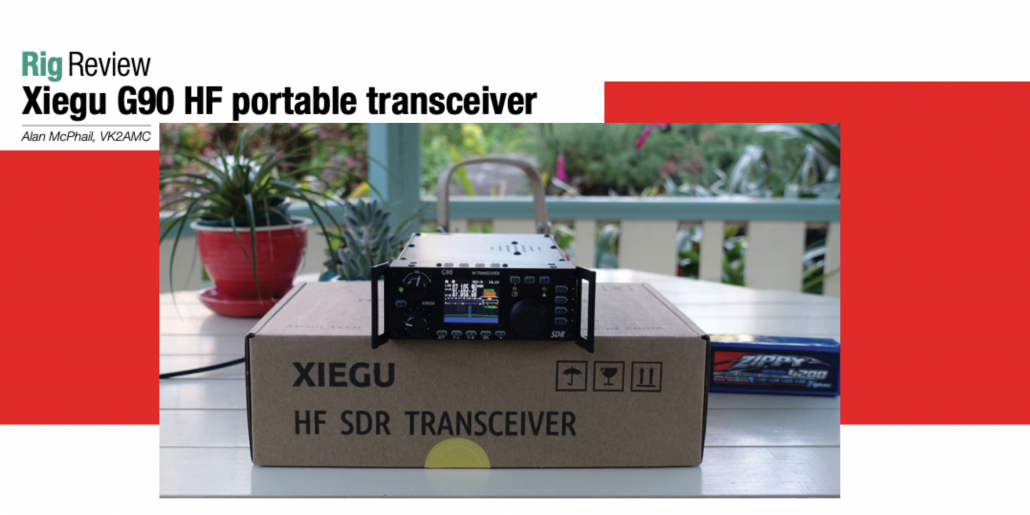
Xiegu G90 HF portable transceiver by Alan McPhail, VK2AMC
We were delighted to receive this fantastic “Rig Review” from fellow radio enthusiast Alan McPhail. His story starts below!!
In 1951, as a four-year-old, I first became aware of amateur radio. My father had been transferred to Townsville by the Department of Civil Aviation and, while sitting in the rear of my parents 1934 Continental Beacon, I saw an HF quad antenna mounted on a tower.
My father explained to me that the antenna was at the home of a radio amateur and it allowed him to talk with people around Australia and the world by radio. This was the beginning of my interest in amateur radio. I have been licensed since 1978, but because of an interesting career, I did not become active on the bands until 2011 and then only occasionally.
After a lightning strike at home in 2015 along with the subsequent fire that burnt through the roof space, the house was severely damaged, contents written off and I lost most of my equipment.
The rebuild of the house took 13 months to complete and the subsequent time to resettle limited my amateur radio pursuits. Our home is on a corner block and the backyard garden is unsuitable for setting up a permanent antenna. I have experimented with dipoles but most often I used a home-built Buddistick antenna (www.buddipole.com).
When I was asked to review the G90 I was reticent to accept the task, not because of my extensive electrical and communications engineering background but because I did not have enough experience as an operator on the amateur bands. I note that in-depth reviews have been done by the RSGB, the ARRL, and on YouTube. The G90 has an active and supportive user group. It was suggested that I should share my user experience of the G90 for Amateur Radio readers.
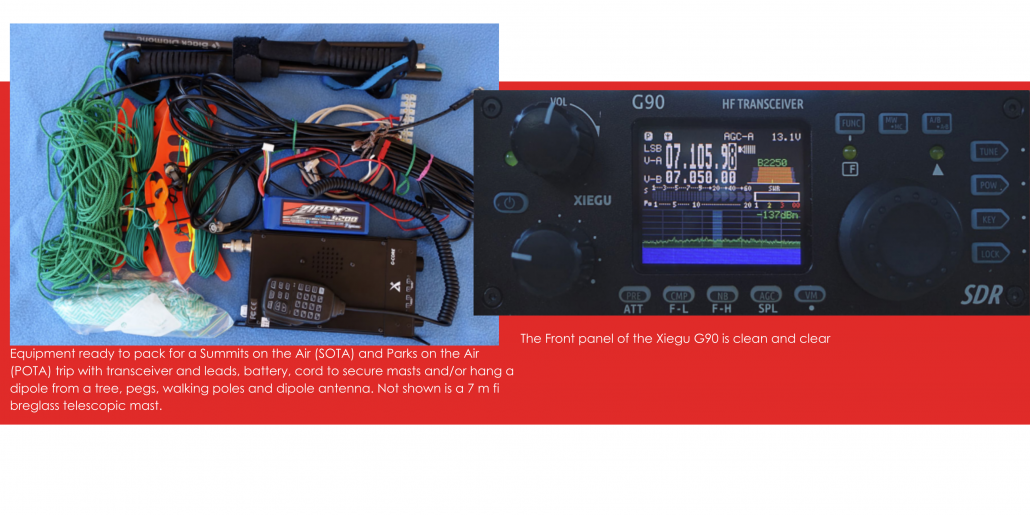
I needed to do some preparatory work to power the G90 and choose an antenna. I fitted Anderson Powerpole connectors to my 4200 mAh LiFePo4 battery and to the battery end of the G90 power cable. I connected the G90 to the battery and a short inside wire antenna. This was sufficient to check that the G90 was working on receive and to become familiar with the basic controls. Initially, I tuned to the ABC frequencies in the broadcast band and experimented with the filter control width and position. The operation manual was easy to follow, and others have improved versions available. Initial observations The colour display is approximately 4.5 cm (1.8”), but it displays a large amount of information very effectively, making the front panel appear larger than it is. On the air Every Friday between 09:00 and 10:00 hours, the Hornsby and District Amateur Radio Club (HADARC) conducts a 40 m net on 7.106 MHz. I thought this would be an ideal occasion to test the G90 on-air. I used a 10 metre length of coaxial cable to connect the transceiver to the antenna. My home-built Buddistick antenna was assembled and slid into the lower three sections of a 7 m-tall telescopic fiberglass mast, increasing the overall height of the antenna by 2.9 m. After installing the antenna counterpoise, I switched on the power to the G90 and tuned to a vacant frequency on 40 m, switched to the AM mode, and pressed the transmit key. The SWR was very high and I checked the antenna connections. Normally, I would adjust the counterpoise length to try to reduce the SWR. However, as I had read good reports about the auto tuner, I decided to activate it.
After a few clicks of changing relays, the SWR dropped to 1:1 and I tuned to the net frequency and joined the net. I spent an hour with the group whose reports on my signal were very encouraging. I could hear most of the participants and received “5 and 9” from several of the participants. Being able to join the group net so quickly on the fi rst setup is a demonstration of how easy the G90 is to operate. The 20 W power output also helped in successfully communicating with more participants than I have previously achieved with my 5 W transceiver. Being able to see the power supply voltage on the display was useful in monitoring my new battery. When switched off, the G90 saves the frequency and mode settings as the start-up values for the next time the rig is turned on. I joined the HADARC Net on a second occasion and I found the controls to be tactile and the panel layout convenient. The receiver audio was of good quality while the ±24 kHz bandwidth spectrum display and SWR scanner were very useful and easy-to-use features. A feature for the hearing impaired in CW mode is the yellow LED that indicates when a signal is being received if there is good reception. The controls There are four pushbutton switches on the top horizontal portion of the front panel, a pair to step up or down the bands, and a pair to cycle through the modes: LSB, USB, CW, CWR and AM. The three front-panel knobs are: • Volume control; a short press will toggle to and from the headphones; • Multi-function Adjustment default steps at 100 kHz and a short press enters the receive mode filter allowing adjustment of the bandwidth and position of the filter. The default operation of the knob can be changed with a long press to change other parameters;
In summary:
The Xiegu G90 is a capable HF QRP transceiver that has easy-to-use – controls with an information-rich colour display. The 20 W output power, adjustable from 1 W, would be appealing to QRP and DX operators, particularly for SOTA and POTA. The standing wave scanner and automatic antenna tuner would also be useful in the field. Above all, I found the Xiegu G90 HF Transceiver was fun to operate.
Read the full article which includes additional tips, information, and even information about the Xiegu G90s portability, click here
The team here at Tecsun Radios Australia are serious about amateur radio and have found the G90 to be fantastic value for a receiver with this power and capabilities on the market.
Thank you the Wireless Institute of Australia for this information.
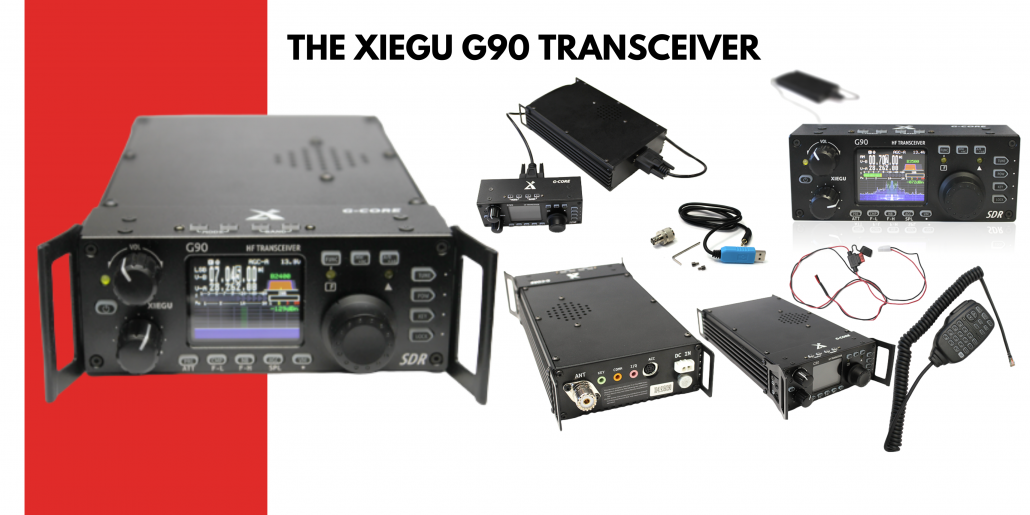
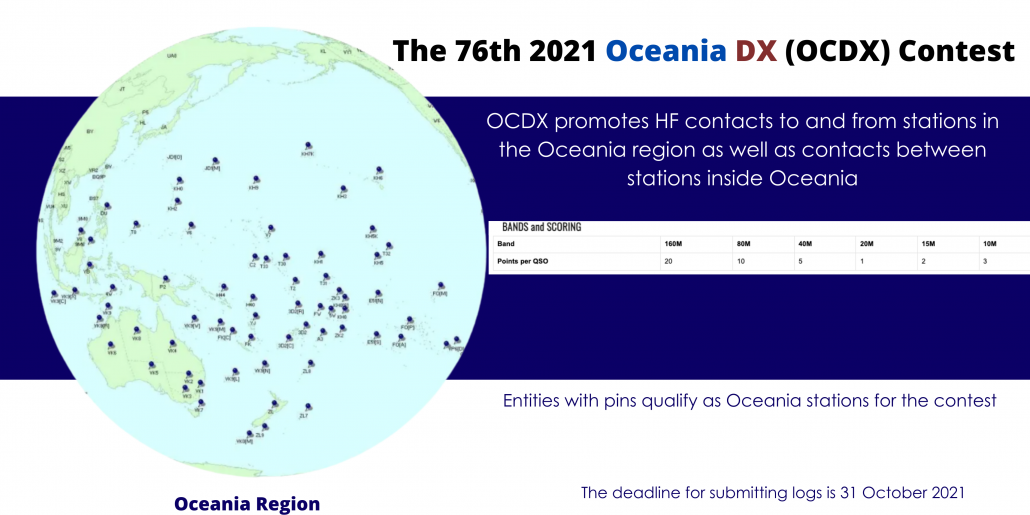
What is the contest?
Every year a contest is held that promotes HF contacts to and from amateur radio stations in the Oceana region as well as contacts between stations inside Oceania. Points are allocated for each contact depending upon the location. There is no penalty for working non-Oceania stations but contacts between non-Oceania stations will score no points or multiplier credits. Each contact or QSO is credited with twenty points on 160M; ten points on 80M; five points on 40M; one point on 20M; two points on 15M; and three points on 10M. Note that the same station may only be counted once on each band for contact points.
The aim is for Oceania entrants to contact as many stations as possible, anywhere in the world !! In 2020 over 1600 stations participated.
Oceania shortwave listeners should try to log as many stations as possible both inside and outside Oceania.
When is it on?
This year there are two separate contests held a week apart. The phone contest will be held on Saturday October 2nd from 06:00 UTC to Sunday, October 3rd 06:00 UTC . The CW contest will be held on Saturday 9 October from 06:00 UTC to Sunday 10 October 06:00 UTC.
Enter one contest or both! See summarised notes provided by the contest holders.
For a clearer map of Oceania click here
SPECIAL NOTES FOR THE 2021 CONTEST
- A reminder that the Phone and CW sections each start at 06:00 on Saturday and end at 06:00 on Sunday.
- The deadline for submitting logs is 31 October 2021.
- Entrants are reminded of the need to observe any COVID related restrictions (e.g. social distancing and travel constraints) that may be in place for the contest dates.
- Electronic logs are to be submitted using the form at https://ocdx.contesting.com/submitlog.php. Please contact the Contest Committee at info@oceaniadxcontest.com if you are encountering difficulty in submitting your log.
- Electronic logs are to be in Cabrillo format which is generated by all popular contest logging software programs. Alternatively, entrants can use the forms at http://www.b4h.net/cabforms.
- Only one entry may be submitted by each operator or team of operators (Rule 6a).
- If the station worked does not provide a serial number for the Oceania DX Contest, then log the received number as 001. See Rule 8.
- A reminder that logs from Single Band entrants must record all contacts made during the contest period, even if on other bands. Only contacts made on the band specified in the Cabrillo header or summary sheet will be used for scoring purposes.
- Indonesia entrants are reminded that the Indonesia amateur radio regulations do not permit the YH club prefix to be used in the OCDX and other national or international amateur radio contests. Only the 7A, &I, 8A or 8I club prefixes may be used for this purpose.
- All entrants are reminded that UTC must be used for recording the date and time of each QSO and that care must be taken to ensure the times are recorded correctly.

The Phone and CW contests are scored separately.
Prefixes are multipliers (e.g. N8, W8, WD8, HG1, HG19, KC2, OE2, OE25, LY1000, VK2 …) on each band on which you work them.
-
- For multiplier purposes, prefixes and callsigns without numbers are notionally assigned a zero e.g. PA/N8BJQ counts as PA0, and XE/KT5W counts as XE0. All callsigns should however be logged as sent.
- Maritime mobile, mobile, /A, /E, /J, /P, or interim license class identifiers do not count as prefixes.
- Special event, commemorative and other unique prefix stations are welcome.
- The total score is the (sum of the Contact Points) multiplied by the (sum of the Multipliers).
CATEGORIES
- Transmitting Single Operator:
- QRP (SO QRP) 5 watts
- low power (SO LP) 100 watts
- high power (SO HP) the lesser of license limit or 1500 watts
- Transmitting Multiple Operators
- Single Transmitter (M1)
- Two Transmitters (M2)
- Multiple Transmitters (MM)
- Short Wave Listener (SWL)
- DXcluster assistance is permitted in all categories, with the usual restrictions (see the full rules for details)
- Entries on individual bands are supported.
- World Stations operate in a separate category to Oceania stations
CQs and EXCHANGES
- Participants typically call “CQ Oceania” on phone, and “CQ OC” on CW.
- Contest exchanges are signal reports plus a serial number, starting at 001.
- Be careful to log callsigns and reports accurately, especially multipliers, since typos can be costly.
- If someone does not send you a serial number, log them as serial number 001.
- To help the adjudicators cross-check other entrants’ logs, please log every completed QSO:
- Log zero-point QSOs (e.g. if DX stations work other DX stations)’
- Log any duplicate QSOs’
- Single band entrants: log your QSOs made on all bands (the Cabrillo header tells us which band you are entering)’
- If you participate but choose not to enter, a checklog would be welcome for the same reason.
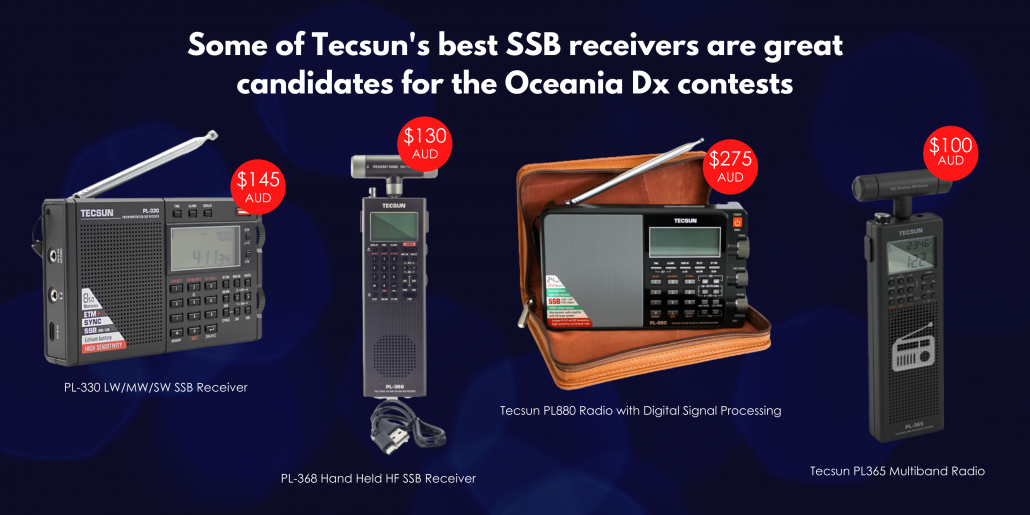
SUBMIT YOUR ENTRY
- The OCDX contests are adjudicated electronically, hence we need your electronic logs.
- If possible, use contest logging software to generate a Cabrillo file, then upload it using the on-line submission form.
- Otherwise please use the online form or some other means to generate a valid plain text column-aligned Cabrillo file, then upload that.Provided you made less than 50 contacts, you can mail in a legible paper log with a summary sheet (see the official rules for details).
- Get your log in before November!
- Every submitted entry will be checked and given a final score as part of the adjudication process … but naturally you are welcome to calculate your claimed score and hope that’s close!
- A veritable profusion of certificates, trophies and plaques will be awarded.
- Please email the Committee at info@oceaniadxcontest.com if you have any problems entering.
- Good luck!
- Click here for the contest rules


